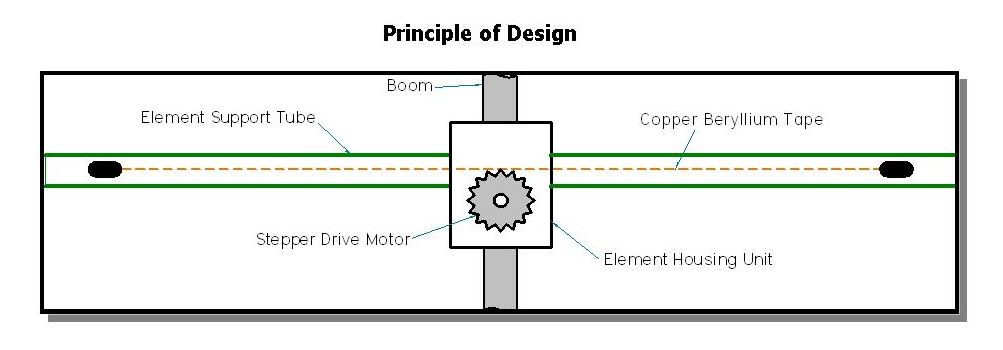
The most potent single tower antenna systems ever seen in Amateur Radio
An Innovative Approach to an Age Old Problem
At SteppIR, we value innovation and technical experimentation over just about everything else (except customer service!). Over the years we have innovated, but nothing beats the first original insight we had into how to deliver a fundamentally better antenna. Historically, most multi-band antennas use traps, log cells or interlaced elements as an approach to cover several frequency bands. All of these methods have one thing in common: they significantly compromise performance. The SteppIR antenna system was our answer to this fundamental problem.
Design
SteppIR Antenna Design
Resonant antennas must be made a specific length to operate optimally on a given frequency. Instead of trying to “trick” the antenna into thinking it is a different length, or simply adding more elements that may destructively interact, our approach is to simply change the antenna length. With this approach, SteppIR antennas gain optimal performance on all frequencies with a lightweight, compact antenna. And since the SteppIR can control the element lengths, a long boom is not needed to achieve near optimum gain and front-to-back ratios on every frequency between 40 meters and 10 meters.
 Each antenna element consists of two spools of flat copper-beryllium tape conductor mounted in the element housing unit. The copper-beryllium tape is perforated to allow a stepper motor to drive them simultaneously with sprockets. Stepper motors are well known for their ability to index very accurately, thus giving very precise control of each element length. In addition, the motors are brushless and provide an extremely long service life. The copper-beryllium tape is driven out into a hollow fiberglass elements support tube (see below), forming an element of any desired length up to the limit of each specific antenna model (a vertical antenna uses only one side). The fiberglass elements support tubes (poles) are telescoping, lightweight and very durable. When fully collapsed, each one measures approximately 59” in length. Depending on the model, there may be additional extensions added to increase the overall element length. The ability to completely retract the copper-beryllium antenna elements, coupled with the collapsible fiberglass poles makes the entire system easy to disassemble and transport.
Each antenna element consists of two spools of flat copper-beryllium tape conductor mounted in the element housing unit. The copper-beryllium tape is perforated to allow a stepper motor to drive them simultaneously with sprockets. Stepper motors are well known for their ability to index very accurately, thus giving very precise control of each element length. In addition, the motors are brushless and provide an extremely long service life. The copper-beryllium tape is driven out into a hollow fiberglass elements support tube (see below), forming an element of any desired length up to the limit of each specific antenna model (a vertical antenna uses only one side). The fiberglass elements support tubes (poles) are telescoping, lightweight and very durable. When fully collapsed, each one measures approximately 59” in length. Depending on the model, there may be additional extensions added to increase the overall element length. The ability to completely retract the copper-beryllium antenna elements, coupled with the collapsible fiberglass poles makes the entire system easy to disassemble and transport.

The antenna is connected to a microprocessor-based controller (via a 22-gauge conductor cable) that offers numerous functions, including dedicated buttons for each ham band and continuous frequency selection from 40 meters to 6 meters (depending on the model). There are also 17 ham and 6 non-ham band memories, within which you can select a 180° direction reversal* or bi-directional* mode and it will adjust in approximately three seconds.
*Yagi antennas only.
